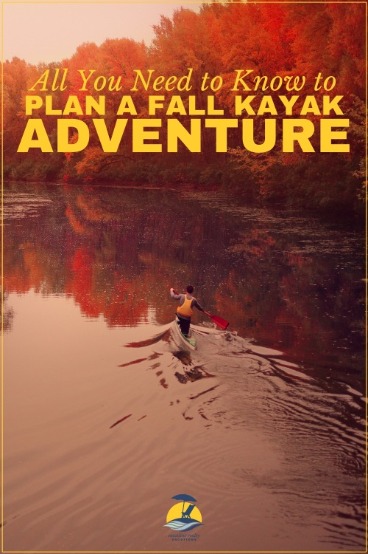All You Need to Know to Plan a Fall Kayak Adventure

For those who love kayaking, fall is one of the best times of year to explore the local waterways of Topsail Island. Not only is the fall foliage beautiful, but the crowds are gone, the temperatures are great, and the water is still warm. If you are looking for a destination for your next kayak adventure, look no farther than Topsail Island.
Find a vacation home
The first step to planning your fall kayak trip is to choose one of our beautiful vacation homes. We even have a great selection of canal and oceanfront homes that are perfect for those who love kayaking.
Looking for a great deal? Click here for our specials.

5 Things to consider
Choose a location
First off, you need to choose an appropriate paddling location for the skill level of your group, and this means accepting the fact that your group is only as strong as its weakest paddler. So what makes an appropriate paddling location? Well, if there's anyone in your group who can't physically re-enter their kayak without help, that is a major limiting factor. If for any reason they flip and swim, you'll need to tow them and their gear back to shore.
In this case, you'll need to stay in water that's protected from wind and waves, and close enough to shore so that it's easy to reach. If everyone in the group can confidently roll (or re-enter) the kayak after swimming, then it's reasonable to start traveling further from shore. However, it becomes even more important that you assume a conservative and safety conscious attitude when making decisions about where you'll travel.
Clothing selection
Dressing in layers is always your best plan when exercising in the fall. By dressing in layers, you can adjust for not only the changes in air temperature, but also changes in body temperature. Try to avoid cotton based fabrics that are prone to retaining moisture. Remember that when you are cold and wet you lose a lot of body heat very quickly.
Always pack at least a fleece, something wind and waterproof, and a hat. Most modern kayaks have plenty of dry storage on board, making it easy to pack a little extra clothing on your fall outing.
Stay hydrated
A lot of people don't think about hydration while they are exercising during the cooler months of the year. However, this is a big mistake. Bring plenty of water to help you stay hydrated. Most experts agree that during moderate exercise 20 oz of water an hour should keep you properly hydrated.
Pack an emergency kit
An emergency kit is simply a dry bag with enough gear to make an unplanned night out a realistic option. Depending on where you're at and the weather conditions, your emergency kit should include things like a fleece jacket and pants, rain gear, heavy wool socks, a warm hat, a headlamp, energy bars, water, matches and a lighter with some fire starter, and even a small tarp and some rope. Of course, it's not going to make for the most enjoyable camp trip, but it's going to make camping out an option, which is the most important thing.

Plan your route
One important factor to consider when you're planning a Topsail Island kayak outing is what contingency plan opportunities are available. Having a "Plan B" in mind for getting out of the water is important, because there are many factors that can make your original plan unrealistic (or even dangerous).
For example, what are your options if the wind suddenly picks up, or a thunderstorm approaches? Or, maybe there's even an uncomfortable amount of motorized boat traffic to deal with. Once you've established a paddling route and have come up with some back up plans, it's important to create a float plan (and give it to somebody who's not going to be on the trip). The float plan doesn't need to be a fancy piece of work, but it should communicate where you intend to travel, a general outline of your schedule, and your alternate or contingency plans in case something causes your plans to change. The value of a float plan for day trips or multi-day trips is that they'll give search parties a huge advantage if something happens and you need help.
Safety tips & necessary equipment
PFD: Your personal flotation device should fit snugly and always be on—and there’s never a kayak outing where you can forgo the PFD.
Whistle: Attach it to your PFD. One blast is for attention; three blasts is “help.” If you forget how many, just keep blasting away until a rescuer arrives.
Communication Device: If you’ll ever be out of the whistle range of a person on shore, you need another way to call for help. If cell coverage is stellar everywhere, you can bring a cellphone in a waterproof case. Otherwise, you need a VHF radio.
Headlamp: In case you get stuck after dark.
Bilge Pump: Handy when your bottom side is in a puddle; vital if you capsize and have a boatful of H20 to purge.
Paddle Float: This self-rescue gear requires training to use (if the group’s rescuer can’t help you, you’ll have to rescue yourself).
All that is left to do is pack up the kayaks, fire up the GPS and head to Topsail Island. If you haven't taken the first step though, which is booking a vacation rental, there is still time. Give one of our friendly and knowledgeable reservationists a call today at 800-497-5463 or click the button below to see all of our vacation homes.

